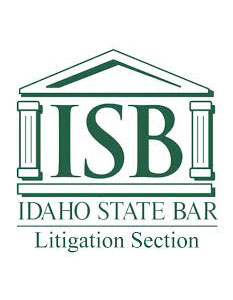Dram shop liability cases come into play when a business or bar that serves alcohol is believed to have played a part in a harmful incident, like a drunk driving accident. These cases focus on the responsibility of bars, restaurants, and other places that sell alcohol if they serve someone who is already clearly intoxicated and that person causes an accident or injury. In a dram shop case, gathering evidence to show that the business was careless in serving alcohol is very important. This evidence has to be collected carefully and shared in court in a clear and effective way. The right evidence helps show that the business contributed to the harmful actions of the person who was drinking. From witness accounts to video footage, each piece of evidence helps to form a clearer picture of what happened. At, Hepworth Holzer, LLP, we are here to guide you through the legal process and help you navigate the complexities of your case.
Understanding Dram Shop Laws and How They Work
Dram shop laws exist to help protect the public from the dangers of overserving alcohol to people who may then act irresponsibly. When a bar or restaurant serves too much alcohol to someone who is visibly drunk, they can become legally responsible if that person then causes harm to others. For example, if a drunk driver leaves a bar and crashes into another vehicle, injuring the other driver, the bar may share responsibility for those injuries. These laws are meant to encourage alcohol-serving businesses to act responsibly and carefully monitor their patrons.
The goal is not to blame bars and restaurants for every accident that involves alcohol, but to make sure they act responsibly. If a business serves someone who is clearly already drunk and that person ends up harming others, the dram shop law provides a way for victims to seek compensation. The process of proving a dram shop case can be complex, so gathering evidence is an important first step. Strong evidence can help demonstrate that the business failed to act responsibly, giving the victims the support they need in court.
Types of Evidence Used in Dram Shop Liability Cases
Evidence in dram shop liability cases can include many types of proof. Witnesses, receipts, video recordings, and testimony all work together to show what happened at the bar or restaurant and why the business should share some responsibility. Each type of evidence helps to create a more complete picture of what occurred, showing the court exactly why the business should be held accountable. In a dram shop case, this evidence must be solid and convincing.
One key type of evidence is eyewitness testimony. This includes statements from people who were at the bar or restaurant and saw the patron being served while visibly drunk. These witnesses could be other patrons, employees, or even the bartender who served the alcohol. Their accounts can help the court understand how much alcohol the person was served, what their behavior was like, and if the bar staff had any reason to believe they were too intoxicated. Another critical piece of evidence can be financial records. This includes receipts and payment information that shows how much alcohol the person bought or consumed. If the receipts show a large number of drinks served over a short period, it could indicate that the business was reckless in their serving practices.
Gathering and Protecting Eyewitness Testimonies
Eyewitnesses play a big role in dram shop cases. Gathering statements from those who saw what happened before the harmful incident is a very important step. Witnesses can describe the actions and behavior of the intoxicated person, whether they were slurring words, stumbling, or showing other signs of drunkenness. They might also mention if they saw bartenders or servers continue to provide alcohol to someone who seemed clearly intoxicated. This testimony can help to show that the business was aware of the risks but chose to ignore them. Witnesses are often people who were at the establishment when the intoxicated person was drinking. They could include friends of the intoxicated person, strangers, or even the employees who served them.
To gather this evidence effectively, investigators may interview these people shortly after the incident, when their memories are still fresh. It is important to collect these statements as soon as possible so that the witnesses remember as much detail as they can. Sometimes, investigators even ask witnesses to write down what they remember. In addition to protecting the testimonies, investigators will often prepare written or recorded statements from the witnesses. These records can be used later in court to support the case against the business. Keeping this information safe and accessible is essential, as it may serve as a key piece of evidence in the case.
Using Video and Surveillance Footage as Evidence
Video and surveillance footage from the business can provide powerful evidence in dram shop cases. Many bars, restaurants, and clubs have security cameras to monitor their premises, which can capture what happens during a patron’s visit. These cameras can reveal if a person was stumbling, acting aggressively, or showing clear signs of intoxication. Footage can also show how the staff interacted with the intoxicated person, including if they kept serving them alcohol despite obvious signs of drunkenness.
The footage is often carefully reviewed to find these signs of intoxication and any indications of irresponsible serving practices. For example, a recording might show a bartender serving multiple rounds of drinks to a single patron in a short time. If the patron is visibly intoxicated but still being served, this footage can support the claim that the business acted recklessly. If a business does not have its own cameras, investigators may look for nearby surveillance sources, such as cameras at neighboring businesses or street cameras, which can sometimes capture useful information about the patron’s behavior before or after they left the establishment.
Analyzing Financial Records and Bar Receipts
Financial records and bar receipts are useful in building a dram shop liability case. These documents can provide a paper trail of what the intoxicated person consumed during their time at the establishment. A person’s tab or receipt can show if they ordered multiple rounds of strong drinks or drank in rapid succession, which could indicate over-serving. This information can be matched with witness statements and video footage to build a stronger case.
Receipts can be especially helpful if they show a pattern of heavy drinking. If the tab shows a large number of drinks over a short period, it could suggest that the bar was not monitoring the patron’s intake. Financial records may also show if the patron paid for rounds for a large group, which could lead to further questioning about who was served and how the drinks were distributed. For investigators, these records serve as a concrete way to link the actions of the bar or restaurant to the accident caused by the intoxicated person, showing a clear link between their serving practices and the incident.
Presenting the Evidence in Court
Once all the evidence is gathered, it must be presented in court to show why the business should be held responsible. Presenting the evidence in a clear and organized way is essential for convincing the court that the business played a part in the accident. Evidence like witness testimonies, video footage, and receipts are all introduced to explain how the intoxicated person was served too much alcohol. This evidence helps to show that the business was negligent in serving alcohol and failed to act responsibly. Lawyers will usually present witnesses in a way that allows them to explain what they saw and experienced. Witnesses might testify about the patron’s behavior, the number of drinks they saw being served, and any clear signs of intoxication.
Rules of a Personal Injury Claim Choosing a Personal Injury AttorneyRelated Videos
Video footage, if available, is often shown in court to give a visual account of the person’s behavior and the actions of the staff. Financial records and receipts may be used to outline how much alcohol was served and how quickly it was provided. Altogether, these pieces of evidence tell a story that the business ignored obvious signs and continued serving someone who was already impaired. Lawyers will carefully connect each piece of evidence to show that the business’s actions directly led to the harmful incident. When presented effectively, this evidence helps support the case and gives the court a full picture of the business’s role in the accident.
Verdicts & Settlements
Dram shop cases require strong evidence and a clear presentation to hold a business responsible for overserving alcohol to a person who later caused harm. These cases can be complex, needing careful attention to detail to show how a bar or restaurant failed in its duty to act responsibly. Whether it’s gathering eyewitness testimonies, analyzing video footage, or studying financial records, each part of the evidence can help make a case stronger. For those affected by the actions of an intoxicated individual, working with a knowledgeable legal team can make all the difference. At Hepworth Holzer, LLP, we have the experience and commitment to guide you through each step of the process and ensure that your voice is heard. If you or a loved one has been impacted by an overserved patron, reach out to Hepworth Holzer, LLP for support and let us help you get the justice you deserve.











